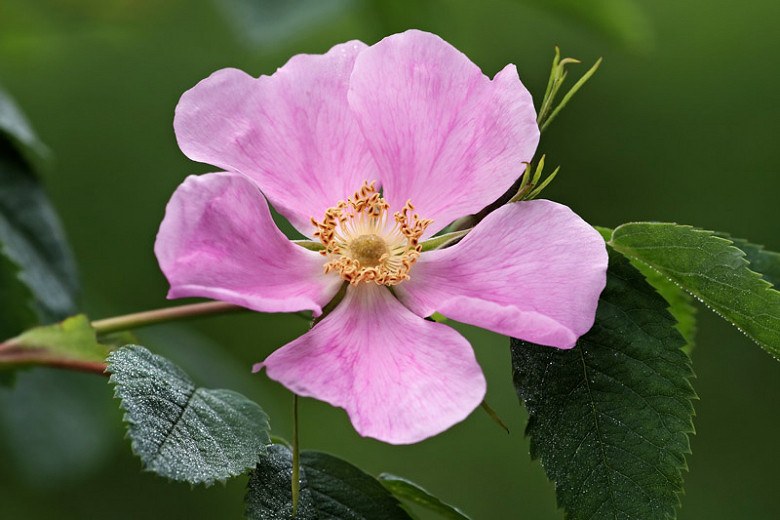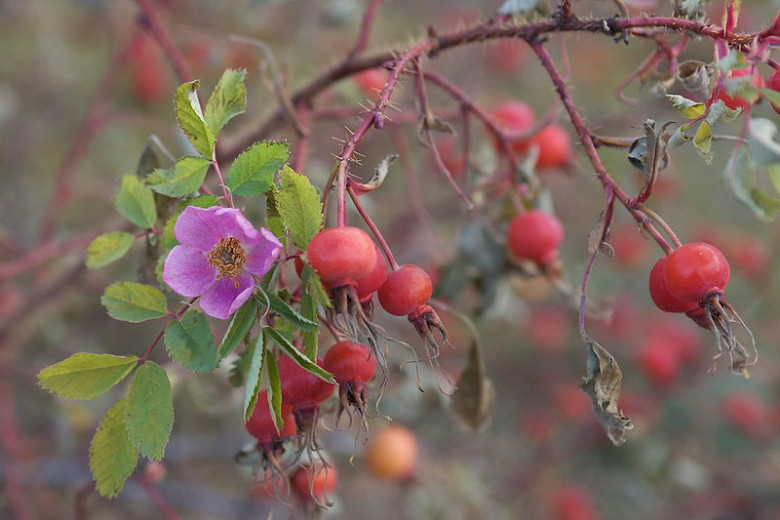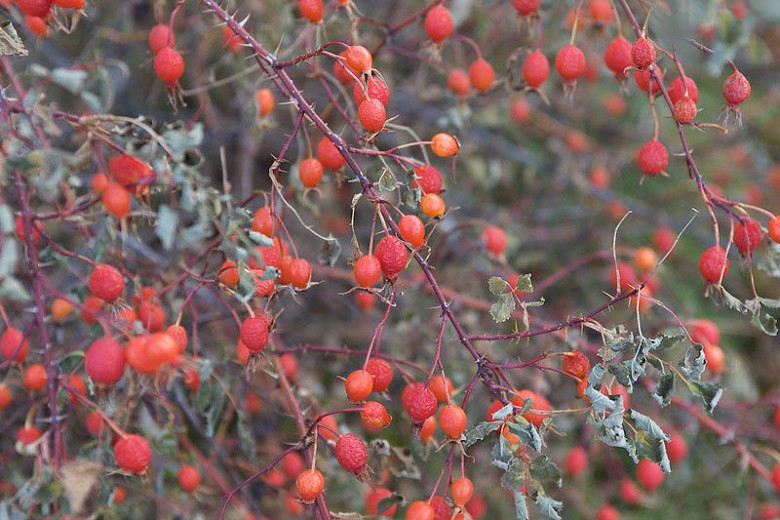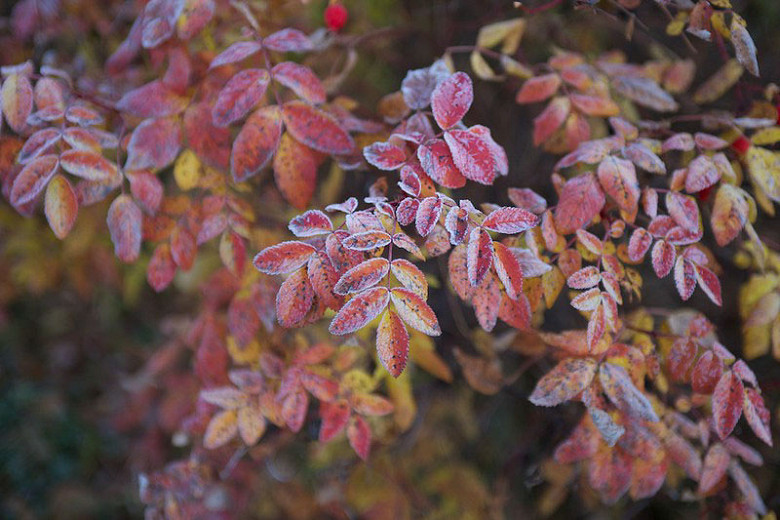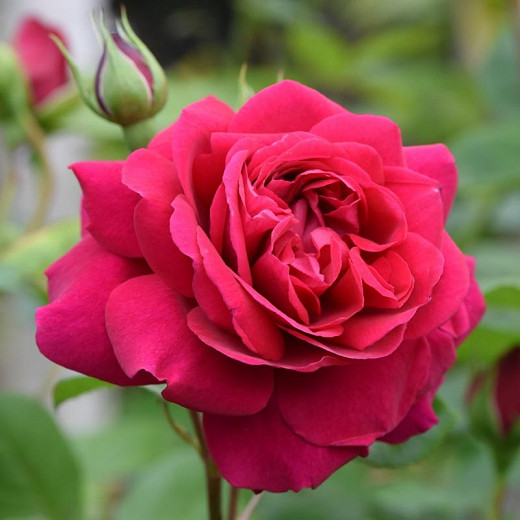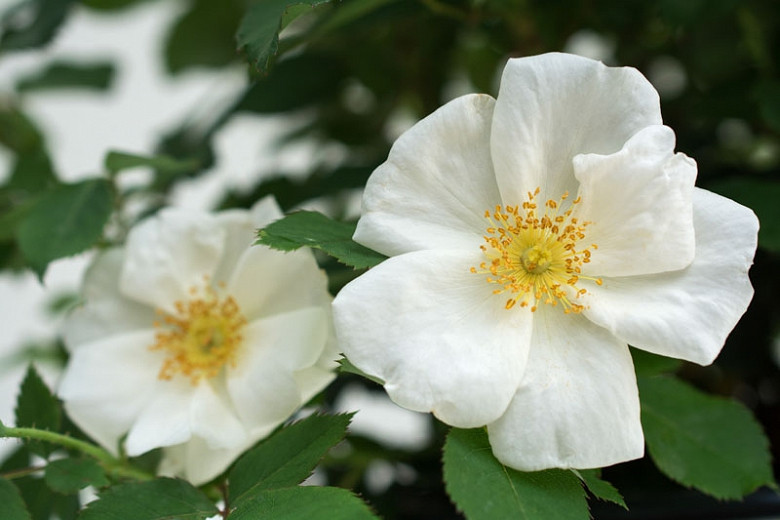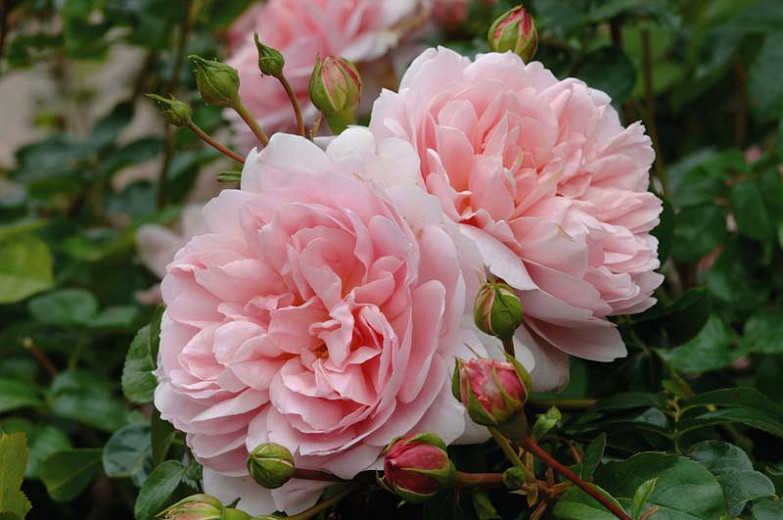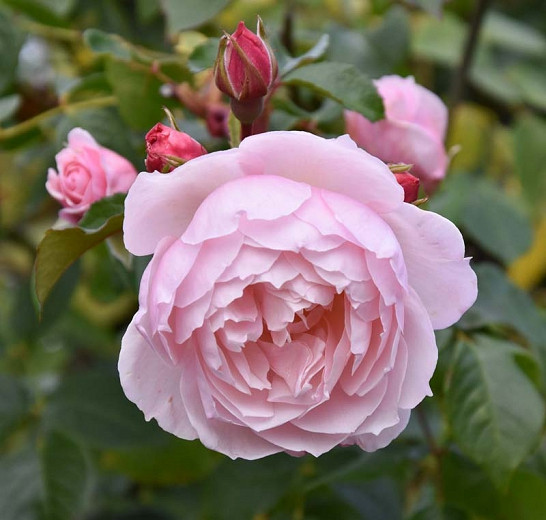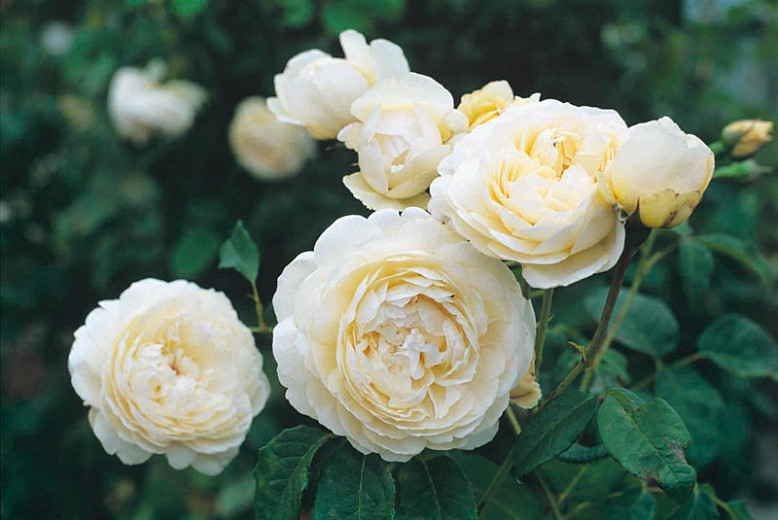Rosa acicularis (Prickly Wild Rose)
Incredibly hardy, Rosa acicularis (Prickly Wild Rose) is a multi-stemmed deciduous shrub forming a bushy mound of compound, finely toothed, dark green leaves with elliptical, 5 to 7 leaflets. In late spring to early summer, it is covered with a plentiful array of fragrant, single, rosy-pink flowers, 2-3 in. across (5-7 cm), with yellow central stamens. They usually grow singly (occasionally two or three) at the ends of side branches off the previous year’s stems. The twigs are bristly with many straight, slender, gray, sharp-pointed spines or prickles. As an extra bonus, the flowers are followed by bright red pear-like rose hips which are high in vitamin A and are a winter source of vitamin C. Fleshy and edible, they persist throughout winter to the delight of hungry birds who will feast on them. Rose hips are also great for jelly and tea. Prickly Wild Rose is a widespread species, from northern Canada to New Mexico, and is the state flower of Alberta. Prickly Wild Rose is an early colonizer of disturbed sites. It is recommended for revegetation on moist to wet sites in Alaska and Alberta, and it is a good choice for erosion control, especially since the prickly stems may discourage overbrowsing. Prickly Wild Rose is also a lovely addition to a wildlife garden and is useful as a flowering hedge or in meadows and prairies where this colony-forming rose can freely grow. Thickets provide excellent nesting sites and protective cover for birds, as well as shelter for small mammals.
- Grows up to 3-7 ft. tall (90-210cm) and 4-6 ft. wide (120-180 cm). This rhizomatous shrub can form dense colonies, spreading via roots.
- Best grown in full sun or part shade in moist, well-drained soils. Tolerant to clay soils or acidic soils and adapted to a wide range of soil textures and moistures. It is also drought tolerant.
- This ravishing shrub is a superb addition to prairies and meadows and creates a lovely flowering hedge.
- Keep an eye out for leaf rusts, leaf spots, powdery mildew, stem canker, and crown gall.
- Attractive to birds, bees, and butterflies.
- Do not remove spent flowers if you want to enjoy a beautiful crop of rose hips in fall and winter.
- Best pruned in late winter once the threat of extreme cold has passed.
- Propagated by stem cuttings or division of rootstock. Rose seeds should be taken from the hips as soon as ripe and planted in the open or stratified before planting.
- The native range is circumpolar in the boreal forest region, from Alaska, British Columbia to Quebec and New England. It is also found in the Rocky Mountains as far south as northern New Mexico and in the northern Great Plains and the Lake States.
Requirements
| Hardiness | 2 – 6 |
|---|---|
| Plant Type | Roses, Shrubs |
| Plant Family | Rosa – Shrub Roses, Rosa – Roses |
| Exposure | Full Sun, Partial Sun |
| Season of Interest | Summer (Early,Mid)FallWinter |
| Height | 3' – 7' (90cm – 210cm) |
| Spread | 4' – 6' (120cm – 180cm) |
| Spacing | 48″ – 72″ (120cm – 180cm) |
| Water Needs | Average |
| Maintenance | Low |
| Soil Type | Clay, Loam, Sand |
| Soil pH | Acid, Alkaline, Neutral |
| Soil Drainage | Moist but Well-Drained |
| Characteristics | Fragrant, Showy, Fruit & Berries |
| Native Plants | United States, Alaska, Midwest, Illinois, Iowa, Kansas, Michigan, Minnesota, South Dakota, Wisconsin, Northeast, Connecticut, Maine, Massachusetts, New Hampshire, New York, Rhode Island, Vermont, Pacific Northwest, Idaho, Rocky Mountains, Colorado, Montana, Wyoming, Southeast, Virginia, Southwest, New Mexico |
| Tolerance | Clay Soil, Drought |
| Attracts | Bees, Birds, Butterflies |
| Garden Uses | Beds and Borders, Hedges and Screens |
| Garden Styles | Informal and Cottage, Prairie and Meadow |
